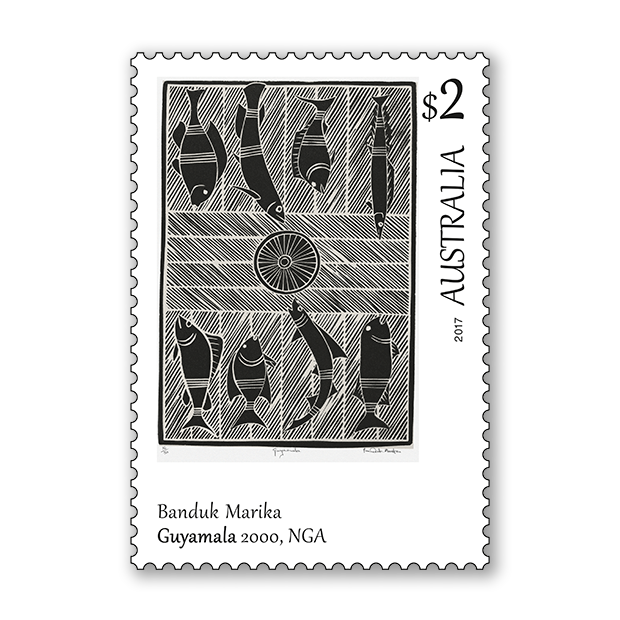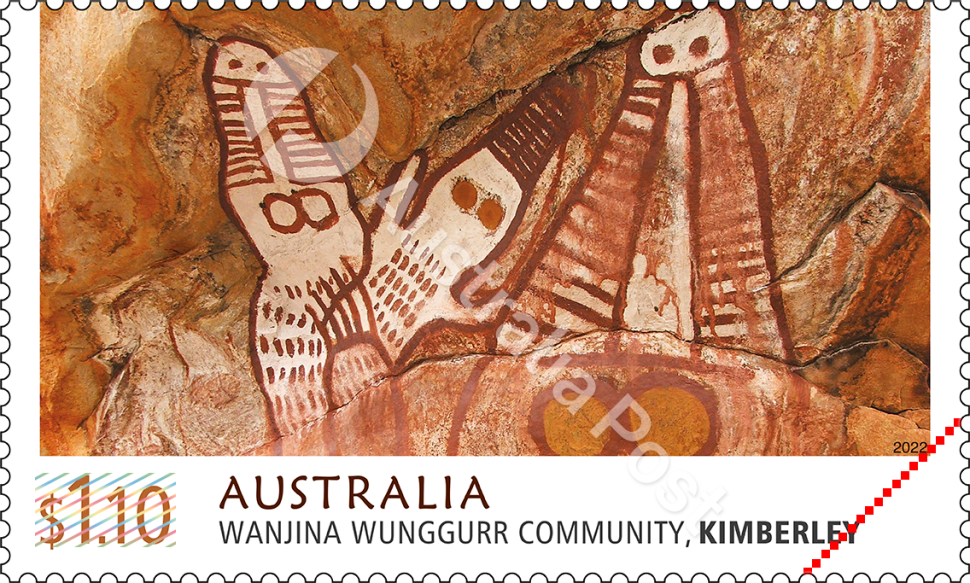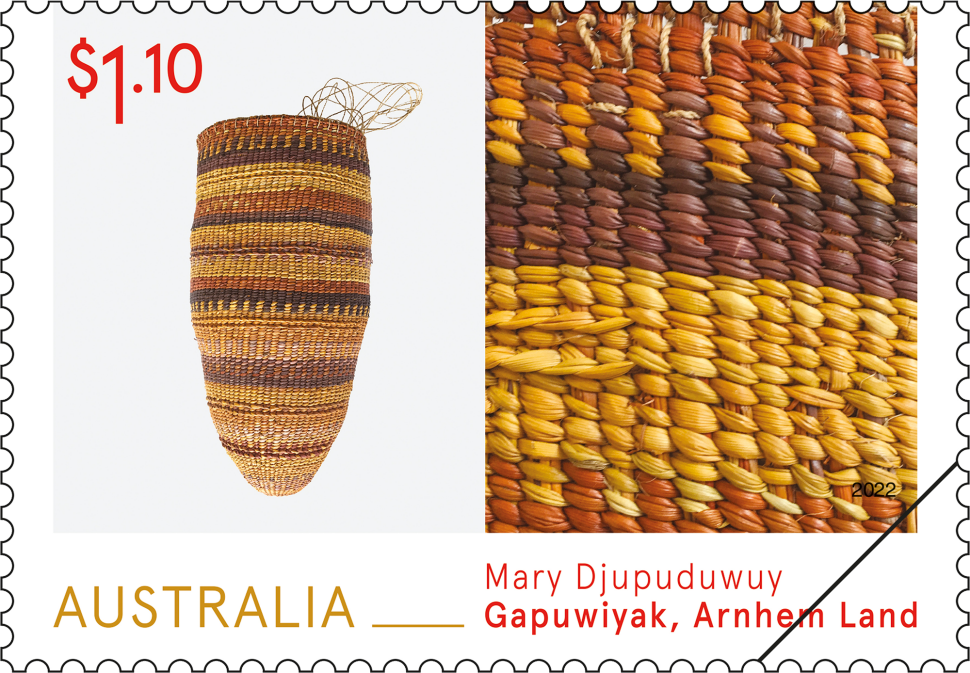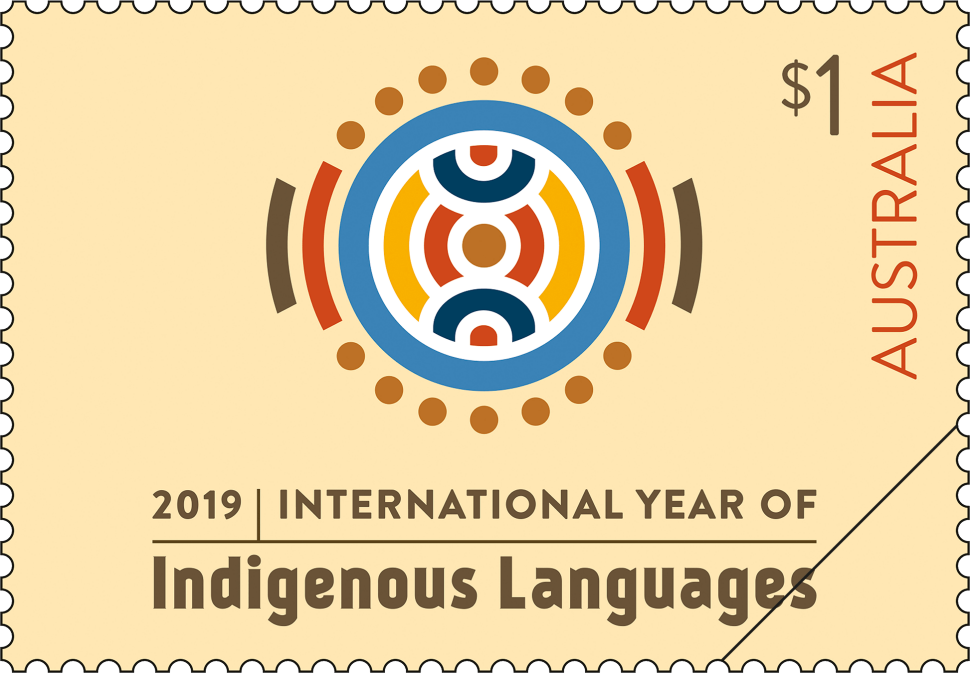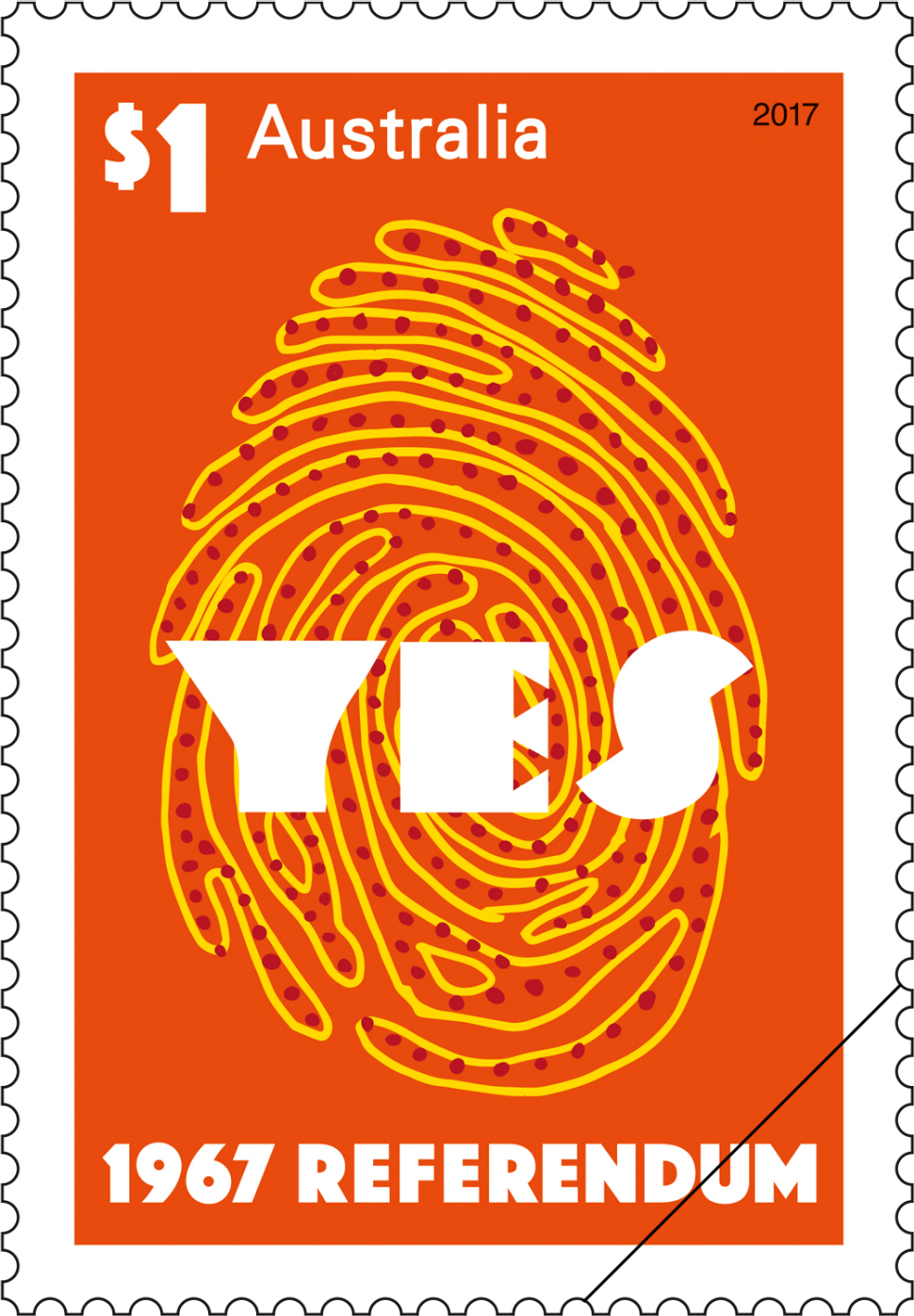This special issue of four stamps features works by two eminent artists from the northern regions of Australia’s Northern Territory, Banduk Marika and Bede Tungutalum.
Banduk Marika was born in Yirrkala, Arnhem Land, in 1954. She belongs to the Rirratjingu clan of north-east Arnhem Land or Miwatj region. Marika comes from a celebrated family of talented artists and was taught to paint by her father, the renowned bark painter Malawan Marika. She works in linocut, screenprint and also on bark. Banduk Marika’s work is held in many public and private collections. Her numerous honours and positions have included artist-in-residence at the Canberra School of Art and at Flinders University, manager of the Buku-Larrnggay Mulka Arts Centre in Yirrkala and board member of both the National Gallery of Australia and Museums and Art Galleries of the Northern Territory. She has been a member of the Aboriginal and Torres Strait Islander Arts Board of the Australia Council and in 2001 was awarded the Aboriginal and Torres Strait Islander Arts Board’s prestigious Red Ochre Award for lifetime achievement. In 2005 she was the recipient of the Telstra Bark Painting Award.
Bede Tungutalum was born in 1952 at Wurrumiyanga (Nguiu), Bathurst Island, in the Tiwi Islands north of Darwin. His country is Munupi, Melville Island and skin group Yarrinapinilia (Red Ochre). He lives and works at Wurrumiyanga across a range of media, including carved and painted wooden sculpture, printmaking and painting. Tungutalum’s first art instructor was his father, the renowned sculptor Gabriel Tungatalum. In 1969 he co-founded Tiwi Design, an art centre in Wurrumiyanga dedicated to the production of hand-printed fabrics featuring Indigenous designs. Tungutalum has undertaken residencies in Canada and New Zealand, is represented in many public and private collections. His awards include the 1986 Peter Stuyvesant Cultural Foundation Award and first prize in the 2000 Shell Fremantle Print Award.
Designer
The stamps, designed by Lynette Traynor of the Australia Post Design Studio, feature two works by each artist. All works are part of the collection of the National Gallery of Australia.
Products released in this issue
- First day cover (blank, gummed)
- Stamp pack
- Maxicards
- Booklet of 20 x $1 (self-adhesive)
Technical specifications
- Issue date
- 24 October 2017
- Issue withdrawal date
- 30 April 2018
- Denominations
- 2 x $1, 2 x $2
- Stamp design
- Lynette Traynor
- Product design
- Jo Mure
- Printer - gummed
- EGO
- Paper - gummed
- Tullis Russell Red Phosphor
- Paper - self-adhesive
- Securepost 90
- Printing process
- Offset lithography
- Stamp size
- 26mm x 37.5mm
- Perforations
- 14.60 x 13.86
- Sheet layout
- Module of 50
- FDI postmark
- Darwin NT 0800
- FDI withdrawal date
- 21 November 2017
Pukumani poles is a linocut, printed from multiple blocks. The work, along with the untitled work on the $2 stamp, below, represents tutini or pukumani poles, an important element of the Tiwi burial rite, which comprises a series of elaborate rituals than take over a year to perform. The poles are carved from a local species of Ironbark and decorated with marks that represent ceremonial body paint or the scars acquired during initiation ceremonies. The pukumani ceremony concludes with the poles being erected around the gravesite.
Guyamala is a combination of linocut and screenprint. Like many of Marika’s subjects, Guyamala relates her inherited traditional Dreamtime stories. It depicts the naming of the fishes and is part of a series of prints exploring the theme of Guyurr (the journey) of the Ancestor creators, Djan’kawu, to the shores of northeast Arnhem Land..
This content was produced at the time of the stamp issue release date and will not be updated.

